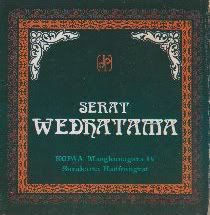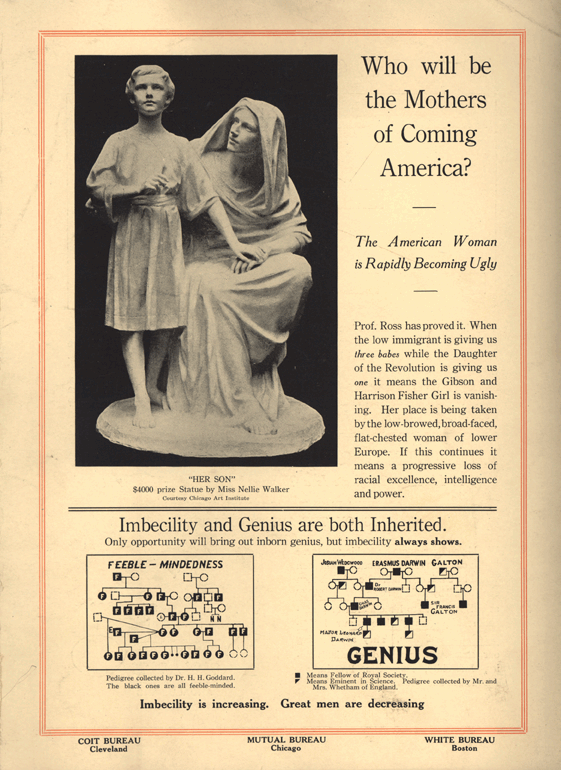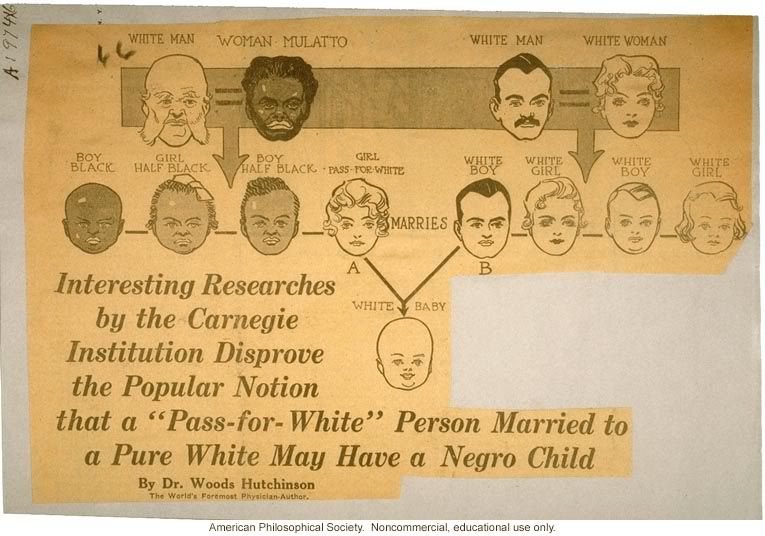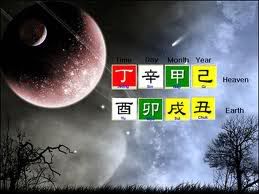子平真詮 Zi Ping Zhen Quan (ZPZQ) is a cornerstone work on Zi Ping BaZi from Qing Dynasty (1644-1911).
10-God Structures were discussed in scattered and unorganised manner in 三命通會 San Ming Tong Hui, 神峰通考 Shen Feng Tong Kao, and, 淵海子平 Yuan Hai Zi Ping classics. None has dwell in as much depth and clarity as Zi Ping Zhen Quan.
It is THE classics on 10-God Structures.
[Strictly speaking, works from Qing Dynasty are not considered as ‘classics’. However, given the influence Zi Ping Zhen Quan has on defining today’s BaZi studies, many contemporary researchers and BaZi masters have given ZPZQ the same weight as 三命通會 SanMingTongHui、淵海子平 YuanHaiZiPing, and 神峰通考 ShenFengTongKao.]
沈孝瞻 Shen Xiao Zhan
沈孝瞻 Shen Xiao Zhan is the original author of 子平真詮 Zi Ping Zhen Quan. He earned the official title of 進士 JinShi in 1739 (乾隆四年)
Following the system from Tang Dynasty, 進士 Jin Shi was a title for people who passed the metropolitan examinations. The title enabled them to become officials with high ranks after making studies at the central Hanlin Academy 翰林院. The metropolitan examinations typically took three days in a closure where the candidates were asked to interprete Confucian classics and to write essays in prescribed literary forms (Eight-foot-essay baguwen 八股文). All official posts were graded in a nine rank system (九品 JiuPin) that was also a heritage from Tang Dynasty.
First Publication: 1779
ZPZQ was originally a 39-chapter personal manuscript. As an official, Shen’s peers were mostly of gentry and court official background. Thus, his notes were mainly shared and circulated within the higher social and academic circles of BaZi enthusiasts for 10 over years until a fellow official 胡空甫 Hu Kong Fu, a strategist for the Wan Ping 宛平府 country administration published it in 1779 (乾隆四十一年丙申).
It was Hu who gave Shen’s manuscript the title of “Zi Ping Zhen Quan 子平真詮”.
(Wan Ping county in Qing Dynasty is BeiJing’s modern day 豐台區 Feng Tai district).
In the foreword, Hu expressed his admiration for Shen’s work:
“戊子歲予由副貢充補官學教習,館舍在阜城門右,得交同裡章公君安,歡若生平,相得 無間,每值館課暇,即詣君安寓談《三命》,彼此辯難,闡民無余蘊。已而三年期滿,僦居宛平沈明府署,得山陰沈孝瞻先生所著子平手錄三十九篇,不覺爽然自 失,悔前次之揣摩未至。遂攜其書示君安,君安慨然嘆曰:“此談子平家真詮也!
先生諱燡燔,成乾隆己未進士,天資穎悟,學業淵邃,其於造化精微,固神而明之,變化 從心者矣。觀其論用神之成敗得失,又用神之因成得敗、因敗得成,用神之必兼看於忌神,與用神先後生克之別,並用神之透與全、有情無情、無力無力之辨,疑似 毫芒,至詳且悉。是先生一生心血,生注於是,是安可以淹沒哉!”
“In 1768, I was posted as an exchange to 阜城 FuCheng’s city gate (a county in modern Hebei province, China). I was a trainer to the local junior officials there. During this period, I met with a colleague whom I had many wonderful exchanges on Bazi during our spare time. There were many occasions; we had engaging but inconclusive debate on BaZi.
After 3 years, I was posted to Wan Ping 宛平府 country bureau. During my tenure, I received a 39-chapter manuscript by Shen in circulation and finally realized my past mistakes in BaZi. What an invigorating find!
My past BaZi understanding was lacking till I read Shen’s indigenous and brilliant explanatory notes on Zi Ping. (Therefore, he gave the title “真詮 ZhenQuan”, which literally means genuine and brilliant explanatory notes).
Shen was conferred the title of JinShi in 1739. He was a gifted and learned man, whose brilliance and depth is shown in his understanding of destiny reading. It takes a man of such caliber to read beyond the superficial appearance of structures and forms (in BaZi) and deciphers the intricacy of BaZi’s dynamics.
His explanatory notes on the following was derived from an in-depth, detailed and multi-facet research:
Following the first publication by Hu
in 1779, a second version was published in 1788 by 趙展如Zhao Zhan Ru. A
few versions of Zi Ping Zhen Quan followed throughout the rest of Qing
Dynasty.
In 1936, during the Republic era -the Nanjing Decade (1928-1937), 方重審 Fang Zhong Shen and 徐樂吾 Xu Le Wu published the version which is in mass circulation today.
Fang and Xu’s version was largely based on Zhao’s version (1788). They expanded and added other introductory chapters with annotations on BaZi principles, making it a version that contains 54 chapters of text filled with many BaZi examples of Xu’s clients and famous personalities from mainly Qing and early Republic.
Xu’s added these examples with his annotations. It is a highly disputable work amongst the BaZi academia today. There are 2 main contentions:
1. Some of the texts are thought to be Xu’s addition. And at times, the sequence of the examples he listed did not meet the context of the original text.
2. Shen’s work was based entirely on 10-God Structure = Useful God 用神. He followed the school of thoughts and applications of Ming Dynasty (1368–1644), which was the mainstream up and until Qing’s Tongzhi era ((1862–1874). It is the same school of thoughts on Useful God as 三命通會 San Ming Tong Hui, 神峰通考 Shen Feng Tong Kao, and, 淵海子平 Yuan Hai Zi Ping, the other classics in circulation today.
According to these texts, 10-God Structure (i.e. Useful God in classical context) is the focal point of a BaZi chart. It is the health of 10-God Structure which was the primary focus of these classics rather than the Day Master’s health. Two categorizations are considered:-
-Wealth, Eating God, Direct Officer and Resource structures are applied sentimentally. These classics would look for the elemental stars which grow the 10-God Structure in question and/or protect it. Example, Wealth Structures are best be grown by Eating God star and protected by Direct Officer star.
-While, Goat Blade, Thriving, Seven-Killing and Hurting Officer Structures use unsentimental application. Example, a Hurting Officer Structure needs Resource star to control or Wealth star to exhaust.
Day Master strength was a secondary concern.
On the other hand, a number of examples given by Xu in his annotations were heavily influenced by Day Master’s strength application, similar to contemporary methods.
I.e. Day Master is the focal point and its health and balance is the priority. Hence, Day Master strength is a concern and seasonal impact on the Day Master 10-Stem plays a part in ‘balancing’ the chart, and, thus the Day Master.. Example, when the Day Master is deemed weak, it needs to be strengthen by Resource and aided by Rob Wealth and Friends. These stars are considered favourable and of which one (sometimes, some would think all) is the Useful God.
後記:
這篇文原定上個星期就交稿,遲遲交不出是因為寫得有些闌珊。
心里是佩服徐樂吾先賢的。他是我心中的大師。沒有先賢出版的《子平真詮》,《窮通寶鑒》等好書,可能今天的八字學者會走更多冤枉路。但他編的注解和案例的確有出入。治學之道,就是鞭策自己以客觀亦宏觀的角度細心的研究學理,看待歷史。共勉之。
10-God Structures were discussed in scattered and unorganised manner in 三命通會 San Ming Tong Hui, 神峰通考 Shen Feng Tong Kao, and, 淵海子平 Yuan Hai Zi Ping classics. None has dwell in as much depth and clarity as Zi Ping Zhen Quan.
It is THE classics on 10-God Structures.
[Strictly speaking, works from Qing Dynasty are not considered as ‘classics’. However, given the influence Zi Ping Zhen Quan has on defining today’s BaZi studies, many contemporary researchers and BaZi masters have given ZPZQ the same weight as 三命通會 SanMingTongHui、淵海子平 YuanHaiZiPing, and 神峰通考 ShenFengTongKao.]
沈孝瞻 Shen Xiao Zhan
沈孝瞻 Shen Xiao Zhan is the original author of 子平真詮 Zi Ping Zhen Quan. He earned the official title of 進士 JinShi in 1739 (乾隆四年)
Following the system from Tang Dynasty, 進士 Jin Shi was a title for people who passed the metropolitan examinations. The title enabled them to become officials with high ranks after making studies at the central Hanlin Academy 翰林院. The metropolitan examinations typically took three days in a closure where the candidates were asked to interprete Confucian classics and to write essays in prescribed literary forms (Eight-foot-essay baguwen 八股文). All official posts were graded in a nine rank system (九品 JiuPin) that was also a heritage from Tang Dynasty.
First Publication: 1779
ZPZQ was originally a 39-chapter personal manuscript. As an official, Shen’s peers were mostly of gentry and court official background. Thus, his notes were mainly shared and circulated within the higher social and academic circles of BaZi enthusiasts for 10 over years until a fellow official 胡空甫 Hu Kong Fu, a strategist for the Wan Ping 宛平府 country administration published it in 1779 (乾隆四十一年丙申).
It was Hu who gave Shen’s manuscript the title of “Zi Ping Zhen Quan 子平真詮”.
(Wan Ping county in Qing Dynasty is BeiJing’s modern day 豐台區 Feng Tai district).
In the foreword, Hu expressed his admiration for Shen’s work:
“戊子歲予由副貢充補官學教習,館舍在阜城門右,得交同裡章公君安,歡若生平,相得 無間,每值館課暇,即詣君安寓談《三命》,彼此辯難,闡民無余蘊。已而三年期滿,僦居宛平沈明府署,得山陰沈孝瞻先生所著子平手錄三十九篇,不覺爽然自 失,悔前次之揣摩未至。遂攜其書示君安,君安慨然嘆曰:“此談子平家真詮也!
先生諱燡燔,成乾隆己未進士,天資穎悟,學業淵邃,其於造化精微,固神而明之,變化 從心者矣。觀其論用神之成敗得失,又用神之因成得敗、因敗得成,用神之必兼看於忌神,與用神先後生克之別,並用神之透與全、有情無情、無力無力之辨,疑似 毫芒,至詳且悉。是先生一生心血,生注於是,是安可以淹沒哉!”
“In 1768, I was posted as an exchange to 阜城 FuCheng’s city gate (a county in modern Hebei province, China). I was a trainer to the local junior officials there. During this period, I met with a colleague whom I had many wonderful exchanges on Bazi during our spare time. There were many occasions; we had engaging but inconclusive debate on BaZi.
After 3 years, I was posted to Wan Ping 宛平府 country bureau. During my tenure, I received a 39-chapter manuscript by Shen in circulation and finally realized my past mistakes in BaZi. What an invigorating find!
My past BaZi understanding was lacking till I read Shen’s indigenous and brilliant explanatory notes on Zi Ping. (Therefore, he gave the title “真詮 ZhenQuan”, which literally means genuine and brilliant explanatory notes).
Shen was conferred the title of JinShi in 1739. He was a gifted and learned man, whose brilliance and depth is shown in his understanding of destiny reading. It takes a man of such caliber to read beyond the superficial appearance of structures and forms (in BaZi) and deciphers the intricacy of BaZi’s dynamics.
His explanatory notes on the following was derived from an in-depth, detailed and multi-facet research:
- The Criteria and qualifying of 10-God Structure.用神之成敗得失
- The criteria of Broken Structures 用神之因成得敗、
- The salvage and transformation of a Broken Structure to a positive 10-God Structure 用神之因敗得成
- The role of unfavourable 10-God in 10-God Structure analysis 用神之必兼看於忌神
- The quality difference between Growth生-Counter剋 sequence, and, Counter剋-Growth生 sequence to a 10-God Structure. 用神先後生克之別
- The consequence of a revealing 10-God Structure (meaning the difference of the 10-God in question being revealed on the Heavenly Stem or not) 用神之透
- The consequence of a Three Harmony Combination of 10-God Structure 用神之全
- The qualification of whether a 10-God Structure is sentimental or merciless有情無情、The qualification of the strength of a 10-God Structure 無力無力之辨
On February 27, 2011, In BaZi Classics - Basic, 子平真詮 Zi Ping Zhen Quan, by Zoe Foo
In 1936, during the Republic era -the Nanjing Decade (1928-1937), 方重審 Fang Zhong Shen and 徐樂吾 Xu Le Wu published the version which is in mass circulation today.
Fang and Xu’s version was largely based on Zhao’s version (1788). They expanded and added other introductory chapters with annotations on BaZi principles, making it a version that contains 54 chapters of text filled with many BaZi examples of Xu’s clients and famous personalities from mainly Qing and early Republic.
Xu’s added these examples with his annotations. It is a highly disputable work amongst the BaZi academia today. There are 2 main contentions:
1. Some of the texts are thought to be Xu’s addition. And at times, the sequence of the examples he listed did not meet the context of the original text.
2. Shen’s work was based entirely on 10-God Structure = Useful God 用神. He followed the school of thoughts and applications of Ming Dynasty (1368–1644), which was the mainstream up and until Qing’s Tongzhi era ((1862–1874). It is the same school of thoughts on Useful God as 三命通會 San Ming Tong Hui, 神峰通考 Shen Feng Tong Kao, and, 淵海子平 Yuan Hai Zi Ping, the other classics in circulation today.
According to these texts, 10-God Structure (i.e. Useful God in classical context) is the focal point of a BaZi chart. It is the health of 10-God Structure which was the primary focus of these classics rather than the Day Master’s health. Two categorizations are considered:-
-Wealth, Eating God, Direct Officer and Resource structures are applied sentimentally. These classics would look for the elemental stars which grow the 10-God Structure in question and/or protect it. Example, Wealth Structures are best be grown by Eating God star and protected by Direct Officer star.
-While, Goat Blade, Thriving, Seven-Killing and Hurting Officer Structures use unsentimental application. Example, a Hurting Officer Structure needs Resource star to control or Wealth star to exhaust.
Day Master strength was a secondary concern.
On the other hand, a number of examples given by Xu in his annotations were heavily influenced by Day Master’s strength application, similar to contemporary methods.
I.e. Day Master is the focal point and its health and balance is the priority. Hence, Day Master strength is a concern and seasonal impact on the Day Master 10-Stem plays a part in ‘balancing’ the chart, and, thus the Day Master.. Example, when the Day Master is deemed weak, it needs to be strengthen by Resource and aided by Rob Wealth and Friends. These stars are considered favourable and of which one (sometimes, some would think all) is the Useful God.
後記:
這篇文原定上個星期就交稿,遲遲交不出是因為寫得有些闌珊。
心里是佩服徐樂吾先賢的。他是我心中的大師。沒有先賢出版的《子平真詮》,《窮通寶鑒》等好書,可能今天的八字學者會走更多冤枉路。但他編的注解和案例的確有出入。治學之道,就是鞭策自己以客觀亦宏觀的角度細心的研究學理,看待歷史。共勉之。
On March 11, 2011, In 子平真詮 Zi Ping Zhen Quan, by Zoe Foo
論用神 On Useful God
八字用神,專求月令,
Useful God (i.e. 10-God Structure) in BaZi is to be seek specifically from the Earthly Branch of the Month;
以日干配月令地支,而生克不同,格局分焉。
using the interaction and relationship of the Day Stem and the Month Earthly Branch, (one’s) 10-God Structure is determined.
財官印食,此用神之善而順用之者也;
Wealth (Structure), Direct Officer (Structure), Resource (Structures) and Eating God (Structure) are sentimental structures, which require sentimental treatments;
殺傷梟刃,此用神之不善而逆用之者也。
Seven Killing (Structure), Hurting Officer (Structure), Thriving (Structure) and Goat Blade (Structure) are non-sentimental structures, which require non-sentimental treatments.
當順則順,當逆則逆,配合得宜,皆為貴格。
When sentimental structures and non-sentimental structures are applied appropriately, they may all be superior structures.
八字用神,專求月令,
Useful God (i.e. 10-God Structure) in BaZi is to be seek specifically from the Earthly Branch of the Month;
以日干配月令地支,而生克不同,格局分焉。
using the interaction and relationship of the Day Stem and the Month Earthly Branch, (one’s) 10-God Structure is determined.
財官印食,此用神之善而順用之者也;
Wealth (Structure), Direct Officer (Structure), Resource (Structures) and Eating God (Structure) are sentimental structures, which require sentimental treatments;
殺傷梟刃,此用神之不善而逆用之者也。
Seven Killing (Structure), Hurting Officer (Structure), Thriving (Structure) and Goat Blade (Structure) are non-sentimental structures, which require non-sentimental treatments.
當順則順,當逆則逆,配合得宜,皆為貴格。
When sentimental structures and non-sentimental structures are applied appropriately, they may all be superior structures.
On March 14, 2011, In Open, 子平真詮 Zi Ping Zhen Quan, by Zoe Foo
Original Text :
是以 善而順用之,則財喜食神以相生,生官以護財;官喜透財以相生,生印以護官;印喜官殺以相生,劫財以護印;食喜身旺以相生,生財以護食。不善而逆用之,則七 殺喜食傷以制伏,忌財印以資扶;傷官喜配印以制伏,生財以化傷;陽刃喜官殺以制伏,忌官殺之俱無;月劫透官以制伏,用財而透食以化劫。此順逆之大略也.
是以善而順用之,
Sentimental Useful Gods are to be treated in a progressive manner (to be grown and protected).
則財喜食神以相生,
Wealth Structure favours EATING GOD to grow Wealth, and/or;
生官以護財;
use DIRECT OFFICER to protect Wealth
官喜透财以相生,
Direct Officer Structure favours WEALTH to grow Direct Officer, and/or;
生印以护官;
Use RESOURCE to protect Direct Officer.
印喜官煞以相生,
Resource Structure use DIRECT OFFICER / SEVEN KILLING to grow Resource, and/or;
劫财以护印;
Use ROB WEALTH to protect Resource.
食喜身旺以相生,
Eating God Structure favour Strong Day Master (meaning ROB WEALTH / FRIEND), and/or;
生财以护食。
use WEALTH to protect Eating God.
________________
不善而逆用之,
Non-sentimental Structures (referring to Seven Killing, Hurting Officer, Goat Blade and Thriving 10-God Structures) need to be limited through regressive treatments of:
exhausting (Grow-Out 生出) elemental relationship (example Hurting Officer Structure)
controlling (Counter-In 剋入) elemental relationship (example Seven Killing Strucute)
则七煞喜食神以制伏,
Seven Killing Structure favours EATING GOD to control.
忌财印以资扶;
WEALTH is unfavourable as it grows and strengthens Seven Killing.
RESOURCE is unfavourable as it shields and thus protects Seven Killing.
伤官喜佩印以制伏,
Hurting Officer Structure favours using RESOURCE to limit it.
(Shen wrote in later chapters that there are 2 conditions with this treatment of controlling Hurting Office Structure: 1. Resource must be rooted. 2.Hurting Officer must be strong.)
生财以化伤;
Hurting Officer grows WEALTH. Wealth is favourable as it exhausts Hurting Officer.
(In later chapter on Hurting Officer Shen elaborated that this is provided that Seven Killing is not protruded.)
阳刃喜官煞以制伏,
Goat Blade Structure favours DIRECT OFFICER and SEVEN KILLING to control;
忌官煞之俱无;
detrimental when Direct Officer and Seven Killing are not present.
月劫喜透官以制伏,
Thriving Structure favours DIRECT OFFICER to control,
利用财而透食以化劫。
use WEALTH with EATING GOD revealing to exhaust Self Elements.
是以 善而順用之,則財喜食神以相生,生官以護財;官喜透財以相生,生印以護官;印喜官殺以相生,劫財以護印;食喜身旺以相生,生財以護食。不善而逆用之,則七 殺喜食傷以制伏,忌財印以資扶;傷官喜配印以制伏,生財以化傷;陽刃喜官殺以制伏,忌官殺之俱無;月劫透官以制伏,用財而透食以化劫。此順逆之大略也.
是以善而順用之,
Sentimental Useful Gods are to be treated in a progressive manner (to be grown and protected).
則財喜食神以相生,
Wealth Structure favours EATING GOD to grow Wealth, and/or;
生官以護財;
use DIRECT OFFICER to protect Wealth
官喜透财以相生,
Direct Officer Structure favours WEALTH to grow Direct Officer, and/or;
生印以护官;
Use RESOURCE to protect Direct Officer.
印喜官煞以相生,
Resource Structure use DIRECT OFFICER / SEVEN KILLING to grow Resource, and/or;
劫财以护印;
Use ROB WEALTH to protect Resource.
食喜身旺以相生,
Eating God Structure favour Strong Day Master (meaning ROB WEALTH / FRIEND), and/or;
生财以护食。
use WEALTH to protect Eating God.
________________
不善而逆用之,
Non-sentimental Structures (referring to Seven Killing, Hurting Officer, Goat Blade and Thriving 10-God Structures) need to be limited through regressive treatments of:
exhausting (Grow-Out 生出) elemental relationship (example Hurting Officer Structure)
controlling (Counter-In 剋入) elemental relationship (example Seven Killing Strucute)
则七煞喜食神以制伏,
Seven Killing Structure favours EATING GOD to control.
忌财印以资扶;
WEALTH is unfavourable as it grows and strengthens Seven Killing.
RESOURCE is unfavourable as it shields and thus protects Seven Killing.
伤官喜佩印以制伏,
Hurting Officer Structure favours using RESOURCE to limit it.
(Shen wrote in later chapters that there are 2 conditions with this treatment of controlling Hurting Office Structure: 1. Resource must be rooted. 2.Hurting Officer must be strong.)
生财以化伤;
Hurting Officer grows WEALTH. Wealth is favourable as it exhausts Hurting Officer.
(In later chapter on Hurting Officer Shen elaborated that this is provided that Seven Killing is not protruded.)
阳刃喜官煞以制伏,
Goat Blade Structure favours DIRECT OFFICER and SEVEN KILLING to control;
忌官煞之俱无;
detrimental when Direct Officer and Seven Killing are not present.
月劫喜透官以制伏,
Thriving Structure favours DIRECT OFFICER to control,
利用财而透食以化劫。
use WEALTH with EATING GOD revealing to exhaust Self Elements.
The 10 Gods/10 Stars |
|
|
|
I was just clarifying what all the 10 main
gods/stars were and realised there isn't a general thread for this
subject. I think for a beginner this would be the next stage before
going any further into more complicated aspects of chinese astrology.
So! These are the 10 Gods/Stars and how you would recognise it in your chart:
Bi Jian - Friendly Parallel or Compare Shoulders - same element and same gender as DM e.g.yin fire looking for yin fire
Jie Cai - Rob Wealth, Unfriendly Parallel, Opposite Parallel - same element and opposite gender as DM e.g. YIN fire looking for YANG fire
Zheng Yin - Direct Resource,Correct Seal,Proper Seal - the element that produces the DM and opposite gender e.g. YIN fire looking for YANG wood
Pian Yin - Indirect Resource,Slanted Seal - the element that produces the DM but is same gender e.g. YIN fire looking for YIN wood
Zheng Guan - Direct Officer,Direct Power - the element controlling the DM and opposite gender e.g. YIN fire looking for YANG water
Pian Guan - Indirect Officer,Indirect Power(or Qi Sha - 7 Killings) - the element controlling the DM whilst being same gender e.g. YIN fire looking for YIN WATER
Zheng Cai - Direct Wealth,Proper Wealth - the element controlled by the DM and opposite gender e.g. YIN fire looking for YANG metal
Pian Cai - Indirect Wealth - the element controlled by the DM and is same gender e.g. YIN fire looking for YIN metal
Shi Shen - Eating God,Gracious Output - the element that is produced by the DM and is the same gender e.g. YIN fire looking for YIN Earth
Shang Guan - Hurting Officer, Drastic Output - the element that is produced by the DM but is the opposite gender e.g. YIN fire looking for YANG Earth.
Although it's 10 gods/stars, just think of it as 5 important aspects to people and each has a yin and yang version.
Hurting Officer and Eating God is about a persons output.
Indirect and Direct Wealth is obviously about a persons way of achieving wealth
Direct and Indirect Officer is about a persons mode of obtaining power.
Direct and Indirect Resource is about a persons mode of obtaining the correct resources.
Finally Rob Wealth and Friendly Parallel is about friendship and how you make relations to others.
All five of these have a yin and yang version of the same thing. The easiest two to explain would be friendly parrallel (the yin version) and wob wealth (the yang version). Yin version is making friends easily and Yang version is more about making rivals and competitors,
The only problem I am still facing is the actual difference between getting resources and getting wealth.
Also, getting power has to mean something more specific than getting to the top of a company because that really is the same as getting welath and resources (which comes naturally to being up the chain or in a management position).
Also, I'm sure that each of the five is related to the five elements.
Water is intelligence which is probably the resources (resources may be to do with learning skills)
Wood is about relationships which is likely the rob wealth and friendly star
Fire is about Fame which is likely the output stars eating god and hurting officer
Metal is about money which is likely the wealth stars
Earth is about balance and control which may be the Officer stars.
I may be wrong but hopefully It'll all come together soon.
So! These are the 10 Gods/Stars and how you would recognise it in your chart:
Bi Jian - Friendly Parallel or Compare Shoulders - same element and same gender as DM e.g.yin fire looking for yin fire
Jie Cai - Rob Wealth, Unfriendly Parallel, Opposite Parallel - same element and opposite gender as DM e.g. YIN fire looking for YANG fire
Zheng Yin - Direct Resource,Correct Seal,Proper Seal - the element that produces the DM and opposite gender e.g. YIN fire looking for YANG wood
Pian Yin - Indirect Resource,Slanted Seal - the element that produces the DM but is same gender e.g. YIN fire looking for YIN wood
Zheng Guan - Direct Officer,Direct Power - the element controlling the DM and opposite gender e.g. YIN fire looking for YANG water
Pian Guan - Indirect Officer,Indirect Power(or Qi Sha - 7 Killings) - the element controlling the DM whilst being same gender e.g. YIN fire looking for YIN WATER
Zheng Cai - Direct Wealth,Proper Wealth - the element controlled by the DM and opposite gender e.g. YIN fire looking for YANG metal
Pian Cai - Indirect Wealth - the element controlled by the DM and is same gender e.g. YIN fire looking for YIN metal
Shi Shen - Eating God,Gracious Output - the element that is produced by the DM and is the same gender e.g. YIN fire looking for YIN Earth
Shang Guan - Hurting Officer, Drastic Output - the element that is produced by the DM but is the opposite gender e.g. YIN fire looking for YANG Earth.
Although it's 10 gods/stars, just think of it as 5 important aspects to people and each has a yin and yang version.
Hurting Officer and Eating God is about a persons output.
Indirect and Direct Wealth is obviously about a persons way of achieving wealth
Direct and Indirect Officer is about a persons mode of obtaining power.
Direct and Indirect Resource is about a persons mode of obtaining the correct resources.
Finally Rob Wealth and Friendly Parallel is about friendship and how you make relations to others.
All five of these have a yin and yang version of the same thing. The easiest two to explain would be friendly parrallel (the yin version) and wob wealth (the yang version). Yin version is making friends easily and Yang version is more about making rivals and competitors,
The only problem I am still facing is the actual difference between getting resources and getting wealth.
Also, getting power has to mean something more specific than getting to the top of a company because that really is the same as getting welath and resources (which comes naturally to being up the chain or in a management position).
Also, I'm sure that each of the five is related to the five elements.
Water is intelligence which is probably the resources (resources may be to do with learning skills)
Wood is about relationships which is likely the rob wealth and friendly star
Fire is about Fame which is likely the output stars eating god and hurting officer
Metal is about money which is likely the wealth stars
Earth is about balance and control which may be the Officer stars.
I may be wrong but hopefully It'll all come together soon.
What is ‘Shen-Sha’ 神煞 method used for?
‘Shen-Sha’ 神煞/神殺 comprises of two
Chinese words meaning God and Evil in literal translation. It is a short
form for the good and the bad stars. This method calculates the
positioning of the stars with reference to the year, month, day and
hour. Many practitioners used it for BaZi destiny reading 八字算命. It
becomes generic. This is because those with the same birth dates would
share the same Shen Sha. Yet their experiences reflect that their luck
are so different. Unfortunately, I came across BaZi charts with good
noble stars yet they do not behave in any way like the characteristics
of the noble star.
Practitioners have to be aware that some Shen Sha are based on year pillar, others are based on month or day pillar. The mistake is to use them interchangeably. For example, the nobleman star is calculated based on the day stem/day master; the General Star is based on the Year Branch and the Virtue Stars are based on the month branch. In some cases, like the Virtue Stars, it has to be located only in the Day Pillar and not Year or Hour Pillar. Some I.T. applications reflect the nobleman star based on year, month, day and hour stems. You would have nobleman stars all over the chart.
This method is best suited for Date Selection 擇日/日課. It confirms the real existence of the elements in strength. It is not useful that a favourable element is present but weak in strength. For example, using the Sky Map on Android platform, it tells you the locations of the stars. You can ‘see’ whether the actual stars or planets are above you or way below you on the other side of the globe. Above us means that it is ‘unblocked’ and receipt of energy is strong.
The Five Arts of Chinese Metaphysics are meant to be used appropriately. It was never created to be generic in nature. It is an art in balance.
Practitioners have to be aware that some Shen Sha are based on year pillar, others are based on month or day pillar. The mistake is to use them interchangeably. For example, the nobleman star is calculated based on the day stem/day master; the General Star is based on the Year Branch and the Virtue Stars are based on the month branch. In some cases, like the Virtue Stars, it has to be located only in the Day Pillar and not Year or Hour Pillar. Some I.T. applications reflect the nobleman star based on year, month, day and hour stems. You would have nobleman stars all over the chart.
This method is best suited for Date Selection 擇日/日課. It confirms the real existence of the elements in strength. It is not useful that a favourable element is present but weak in strength. For example, using the Sky Map on Android platform, it tells you the locations of the stars. You can ‘see’ whether the actual stars or planets are above you or way below you on the other side of the globe. Above us means that it is ‘unblocked’ and receipt of energy is strong.
The Five Arts of Chinese Metaphysics are meant to be used appropriately. It was never created to be generic in nature. It is an art in balance.

























![[Most Recent Quotes from www.kitco.com]](http://www.kitconet.com/images/quotes_special.gif)






Badai Guruh, apakah kamu punya ZipingZhengquan Yang asli?
BalasHapusKitab Daras Ramal Tiongkok Hasta Aksara 子平真詮 Zi Ping Zhen Quan (Zpzq) ~ Badai Guruh >>>>> Download Now
BalasHapus>>>>> Download Full
Kitab Daras Ramal Tiongkok Hasta Aksara 子平真詮 Zi Ping Zhen Quan (Zpzq) ~ Badai Guruh >>>>> Download LINK
>>>>> Download Now
Kitab Daras Ramal Tiongkok Hasta Aksara 子平真詮 Zi Ping Zhen Quan (Zpzq) ~ Badai Guruh >>>>> Download Full
>>>>> Download LINK